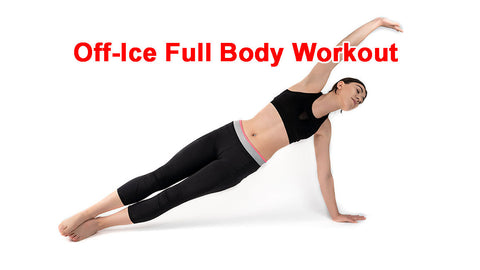7 Best Figure Skating Spiral Tips for Beginners (2025)
Figure skating is a skilled sport that combines both athleticism and artistry.
As a beginner, you might be awe-struck by the spirals performed by professional skaters.
These seemingly effortless extensions of the skater's leg and body, paired with graceful movements on the ice, can feel intimidating to learn.
However, don't be discouraged!
PRACTICE YOUR FIGURE SKATING SPIRALS RIGHT AT HOME WITH POLYGLIDE SYNTHETIC ICE
The spiral is a standout move in figure skating, combining grace and strength.
Beyond its visual appeal, it reflects a skater's technical skill and discipline.
When performed with precision, the spiral can significantly enhance a routine, emphasizing the skater's mastery.
Its elegance and vital role in performances make it a key element in the sport, captivating both judges and audiences alike.

Quick Guide to Enhance Skills
When embarking on your journey to learn figure skating spirals, it is crucial to understand the basics and master the required techniques.
This process might be challenging at first, but with hard work, determination, and the tips provided in this article, you'll be well-prepared to embrace the intricacies of this elegant athletic art form.
We'll cover everything from getting comfortable on the ice to advanced techniques and variations.
Key Takeaways
- Build a strong foundation by understanding figure skating basics
- Enhance your spirals through strength and flexibility training
- Overcome challenges and setbacks to achieve beautiful spiral sequences
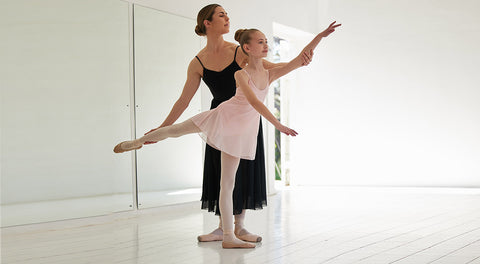
1. Understanding Figure Skating Basics
As a beginner in the world of figure skating, it's essential to start with the basics.
First and foremost, invest in a pair of quality figure skates.
While it might be tempting to rent skates initially, owning your own ensures consistent support and stability, a critical factor in mastering moves and improving overall performance.
Ensure your skates fit snugly, especially in the heel and ankle area.
This support helps maintain balance and control while executing moves.
Make sure the boot and blade combination works well for your weight, height, and skating level.
A knowledgeable skate professional can assist in finding the perfect pair for you.
Proper form is crucial when it comes to figure skating. Remember to bend your knees slightly and keep your weight centered when gliding across the ice.
Maintain an upright posture to create a strong core for balance and stability during more complex moves.
After mastering basic gliding and form, it's time to learn edges.
These are the essential building blocks in figure skating since most moves originate from either inside or outside edges of the skates.
Focus on safely transferring your weight between the edges while maintaining control and balance.
The more comfortable you become with edges, the easier it is to progress to more challenging moves.
Now that you know the essentials, here are some tips to help you improve your figure skating spiral:
- Ensure your weight distribution is aligned with the skating leg and maintain proper posture throughout the spiral.
- Engage your core muscles to maintain stability during the spiral and other moves.
- Work on increasing your flexibility through stretching exercises, which is essential for achieving the perfect spiral position.
- Always push yourself to improve and practice regularly.
- Seek guidance from a qualified coach or experienced skater, as they can offer valuable tips on technique and form.
- Experiment with the different types of spirals – inside, outside, piked, and catch-foot – to determine which one works best for you.
- Remember to take breaks and pace your practice sessions to avoid exhaustion and potential injuries.
By understanding and mastering figure skating basics, you set the foundation for a safe and enjoyable journey into this beautiful sport.
Regular practice, proper equipment, and dedication are the keys to unlocking your full potential and gracefully gliding across the ice.
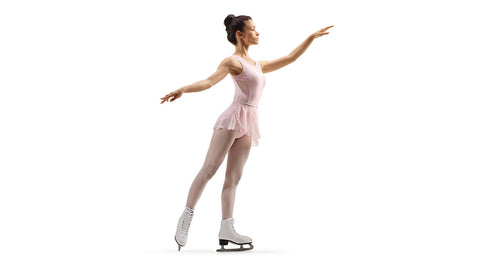
2. Getting Comfortable with Skating Spirals
Skating spirals can seem intimidating at first, but with the right approach, you'll find yourself gaining confidence and skill.
To help you get comfortable with spirals, we've compiled a list of tips and techniques that focus on balance, control, and gliding.
1. Start with the basics: Before attempting a spiral, make sure you're comfortable with fundamental skating skills, such as forward and backward gliding.
This foundational knowledge will help establish your balance and control on the ice.
2. Practice your balance: A strong sense of balance is essential for spirals.
You can work on improving your balance by practicing various one-foot glides, both forward and backward.
Hold each position for several seconds, focusing on stability and control.
3. Focus on body alignment: Proper body alignment is crucial for maintaining control during a spiral.
Keep your chest lifted, shoulders down and back, and core engaged.
This strong, aligned posture will help you maintain your balance throughout the maneuver.
4. Incorporate knee and ankle flexibility: While performing a spiral, you'll need to bend your supporting knee and ankle to maintain balance and control.
Practice deep knee and ankle bends on both forward and backward glides to get comfortable with the movement.
5. Take it slow: It's essential to work through spirals gradually, focusing on technique and control.
Start by practicing a shallow spiral, avoiding the urge to lift your free leg too high.
As your confidence and skills develop, you can slowly increase the height and duration of the spiral.
6. Record your progress: Video can serve as a valuable tool for analyzing and improving your spirals.
Record yourself practicing spirals to monitor your progress and identify areas that may need additional focus.
Watching videos of skilled skaters performing spirals can also offer helpful insights into proper technique and form.
7. Consistent practice: Like any skill, getting comfortable with skating spirals requires consistent practice.
Dedicate time to practicing spirals during each skating session, focusing on improving balance, control, and gliding.
With patience and perseverance, you'll soon notice significant progress in your spiral abilities.
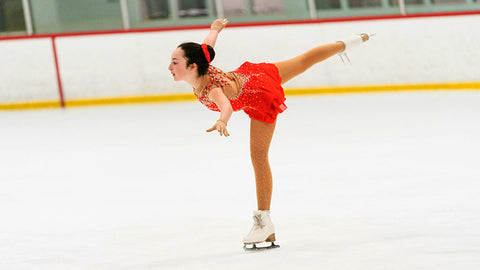
3. Mastering the Art of the Spiral Sequence
To successfully execute a spiral sequence, you need to have strong control and balance.
Begin by practicing your balance, as it is essential for smooth transitions between different spiral positions and maintaining the correct inside or outside edges.
When starting your spiral sequence, decide whether you'll be gliding forward or backward.
This decision will determine the body position, angle, and direction of travel during the sequence.
Forward Spirals: In a forward spiral, glide on one foot with your free leg extended behind you. To maintain balance and control, focus on your center of gravity and keep your arms spread wide, parallel to the ice.
Backward Spirals: For backward spirals, glide on one foot with your free leg extended in front of you.
Ensure your arms remain parallel to the ice for balance, with your shoulders facing the direction of travel.
As you progress, practice shifting your weight on the skating foot to transition between inside and outside edges.
Maintaining body control and balance is crucial when transitioning from an inside edge to an outside edge, and vice versa.
- Inside Edge: Lean towards the inside of the curve with your knee, emphasizing the bend of your skating leg and keeping pressure on the arch of your foot.
- Outside Edge: Lean outwards on the curve by pressing your knee and rolling your ankle outwards, distributing weight to the side of the foot closest to the edge.
Finally, pay close attention to the direction of your spiral sequence.
It's important to maintain a consistent direction throughout the sequence to avoid confusion and maintain fluidity in your performance.
Practice both clockwise and counterclockwise directions to feel confident in executing your spiral sequence in any situation.
By mastering these tips, you'll be well on your way to perfecting the art of the spiral sequence, enhancing the beauty and grace of your figure skating performances.
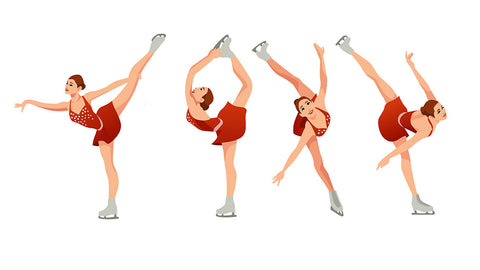
4. Advanced Techniques and Variations
As you progress in your figure skating journey, you'll want to explore advanced techniques and variations of the spiral.
Here, we'll discuss some nuanced moves that can help you stand out on the ice.
One popular variation is the split spiral, an elegant move where you extend your free leg forward and your skating leg backward, forming a split-like position while gliding on one foot.
Maintain a straight and controlled upper body to improve your balance and leg extension.
The arabesque spiral combines elements of ballet with figure skating for a breathtaking finish.
While gliding, lift your free leg and extend it behind you, reaching an arabesque position.
Keep your back leg straight and toes pointed to achieve proper form. Adding a catch—grabbing your free leg with one or both hands—can further enhance this move.
To challenge your balance and control, try the change of edge spiral.
Begin with an outside edge spiral, then switch to an inside edge spiral without lowering your free leg.
Mastering this technique will showcase your agility and stability.
Incorporate 'camel spin' and 'Biellmann' positions to display flexibility.
For the camel spin, try extending your free leg behind you while spinning on a single foot—similar to an arabesque but with most of your weight on one side.
The Biellmann, on the other hand, requires exceptional flexibility: extend your free leg upward behind your head and grab it with both hands, forming a loop.
Lastly, don't forget the mesmerizing Charlotte spiral.
While gliding, bend your skating leg's knee and lower your upper body towards the ice, extending your free leg up and parallel to the ice.
With core strength and balance, you can give a dramatic flair to your performance.
Always remember that practice and persistence are essential to mastering these advanced techniques and variations.
With consistency and dedication, you'll be captivating your audience in no time.
5. Improving Strength and Flexibility
In the world of figure skating, strength and flexibility are crucial for executing beautiful spirals and other elements.
As a beginner, focusing on improving these aspects will help build a strong foundation for your skating journey.
VIDEO: OFF-ICE EXERCISE TIPS FOR FIGURE SKATERS
One way to strengthen your muscles is through targeted exercises.
Weightlifting, resistance training, and even ballet classes can help develop the necessary strength in your arms, legs, and core.
Cross-training activities like swimming and biking can also benefit your overall fitness and muscle endurance.
Swimming is especially useful as it provides a whole-body workout with low impact on your joints.
In addition to building strength, you should also work on your flexibility.
Stretching your muscles regularly helps enhance your range of motion and enables correct posture during spirals.
A warmup routine that includes dynamic stretches, such as leg swings and arm circles, prepares your body for skating.
Furthermore, incorporating yoga or Pilates into your weekly routine can significantly improve your flexibility, balance, and core strength.
Another valuable aspect of improving your strength and flexibility is a nourishing diet.
Consuming lean proteins, complex carbs, and healthy fats will fuel your body and support muscle growth and recovery.
Alongside nutritious foods, remember to stay well-hydrated throughout the day.
Finally, practice is essential for mastering your figure skating spirals.
Spend time on and off the ice to develop your strength and flexibility.
By being diligent in your training, you will find yourself becoming more confident, precise, and graceful in your spirals and skating overall.
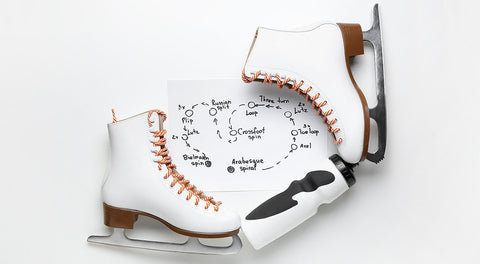
6. Compulsory Figures, Moves in the Field and Other Elements
In your figure skating journey, you will come across various compulsory figures, moves in the field, and other required elements that shape the foundation of any program.
Mastering these elements is crucial for beginners seeking to develop their skills and eventually perform jumps, spins, and more complex skating routines.
One of the foundational elements of figure skating is the stroke.
Working on your stroke allows you to move smoothly around the rink and build speed.
As a beginner, practice the basic forward and backward strokes, focusing on maintaining balance, as well as shifting your weight and leg movements.
Moves in the field are an essential part of figure skating and include a wide range of turns, steps, and skates.
An example of a move in the field you will learn is the three turn.
This element involves changing direction by turning from the inside edge to the outside edge or vice versa. The key to mastering the three turn is good posture, balance, and control.
Another crucial element of figure skating is the ability to move backwards. T
o do this, you will need to learn crossovers and mohawks.
Crossovers are performed by using the momentum generated from a curve to push off the outside edge of one skate and then step onto the inside edge of the other skate.
Mohawks are a type of turn that requires a change in direction with feet placed heel to heel, switching from one foot to the other.
Practicing these elements regularly will help you become comfortable moving in any direction on the ice.
In addition to the aforementioned elements, figure skaters must also learn various jumps and spins.
As a beginner, start with basic jumps like the waltz jump or the Salchow, and spins such as the two-foot spin or the scratch spin.
These elements will help you build a strong foundation in figure skating and prepare you for more advanced moves later on.
To excel in figure skating, it is essential to invest time and effort in mastering compulsory figures, moves in the field, and other required elements.
This will provide the foundation for more advanced skills and techniques, setting you on the path to becoming a confident and accomplished figure skater.

7. Preparing for Figure Skating Competitions
When preparing for figure skating competitions, you should focus on perfecting your technique and showcasing your strengths.
Competitions, like the Winter Olympics, showcase your abilities to judges, who will rate your performance based on various criteria.
To start, observe accomplished figure skaters such as Michelle Kwan and Sasha Cohen to understand the level of skill and artistry expected during competitions.
Pay particular attention to their technique and extension in moves like the death spiral and free skate.
To improve your technique, consider the following tips:
- Practice regularly: Consistent practice helps build muscle memory, enabling you to perform challenging moves with greater ease.
- Focus on form: Concentrate on maintaining proper body posture and alignment while you skate to execute your moves more gracefully.
- Work on your extension: The quality of your extensions impacts the overall beauty of your performance. Stretch daily to improve your flexibility and enhance your lines.
Remember that judges will evaluate not just your technique but also your artistic interpretation of the program.
Strive to connect with the music and bring emotion to your performance by conveying the story and character of your chosen routine.
Lastly, simulate competition conditions during practice sessions, replicating the pressure and intensity experienced on the day of the event.
Becoming accustomed to performing under such conditions will ensure that you feel confident and prepared when you take the ice for real.
By focusing on these aspects of your training, you can confidently approach your figure skating competition and showcase your best performance.
Conclusion
Remember to always warm up, maintain proper posture, and focus on building your strength and flexibility.
As you continue to practice and fine-tune your technique, you'll soon master the art of figure skating spirals.
To boost your practice sessions and improve your spirals even further, consider creating your own off-ice training space.
PolyGlide Synthetic Ice offers a high-quality, durable, and low-maintenance alternative to traditional ice surfaces that can be assembled in no time at all.
This would allow you to practice your spirals and other figure skating moves from the comfort of your own home any day of the week!
So, why wait?
To find out more about how you can incorporate PolyGlide Ice into your training routine feel free to reach out to us directly (Here)
Your spirals will thank you for it!


